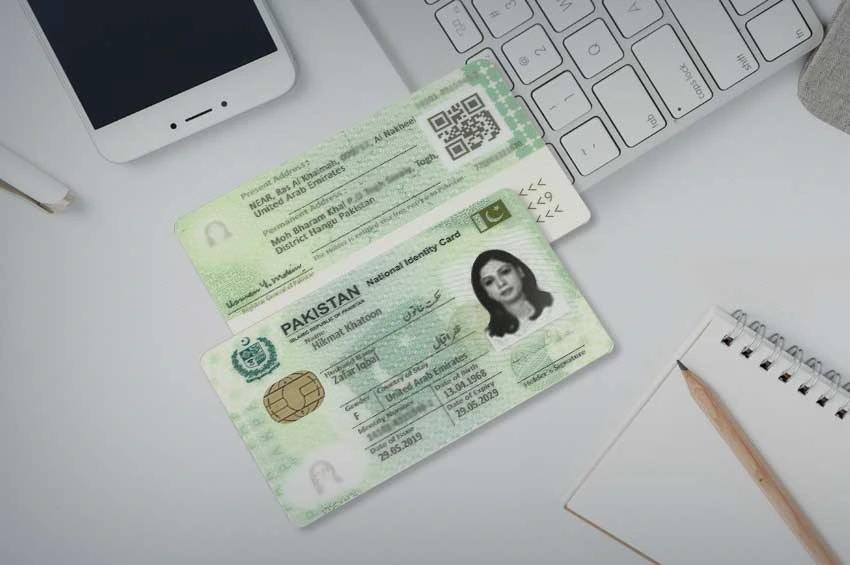Pakistan’s CNIC Information System has evolved from a plastic ID card into a national digital identity backbone. Built and operated by the National Database and Registration Authority (NADRA), it now underpins secure onboarding for banks and fintech, biometric SIM registration, targeted welfare, and dozens of e‑government services. This guide explains how the system works, the features that matter, real user experiences, and how to use it safely, without falling for risky “third‑party databases.”
WHAT IS THE CNIC INFORMATION SYSTEM?
The Computerized National Identity Card (CNIC) Information System is Pakistan’s centralized, biometric identity platform. It securely captures and manages citizens’ core identity attributes (name, CNIC number, DOB, parents’ names, address), biometrics (photograph, fingerprints; liveness checks in remote flows), and lifecycle events (issuance, renewal, modification).
ROLE OF NADRA
- National registry steward: designs policies, runs data centers, and sets issuance standards.
- Card products: CNIC/NICOP (overseas), POC (Pakistan Origin Card), and the chip‑enabled Smart CNIC (SNIC).
- Digital services: Pak Identity (online applications), identity verification APIs for regulated entities, and e‑Sahulat partner network for assisted services.
WHERE CNIC VERIFICATION IS USED
- Telecom: Biometric Verification System (BVS) for SIM issuance and re‑verification; SIM Owner Details lets users check SIM counts linked to their CNIC.
- Financial services: Bank account opening, branchless banking/agents, microfinance, lending, and AML/CFT e‑KYC.
- Public programs: Benazir Income Support/Ehsaas eligibility checks and cash disbursement.
- Government services: Driving licenses, land records (Fard, mutations), passports/e‑passports, and tax (FBR Iris).
- Payments and access: Growing use in digital payments onboarding, and service entitlements.
CORE FEATURES AND CAPABILITIES
- Biometric identity assurance
- Fingerprint and facial biometrics with spoof‑resistant liveness checks in online flows.
- Photo and demographic deduplication to prevent multiple identities.
- Smart card and PKI
- Chip‑enabled Smart CNIC stores secure credentials; PKI and digital signatures support high‑assurance transactions and e‑government.
- Verification APIs (for authorized entities)
- Consent‑based CNIC verification for banks/telcos using secure connections, with audit logs and rate limiting.
- Data quality and lifecycle management
- Structured updates for address, marital status, and family records; issuance and renewal workflows with audit trails.
- Security and compliance
- Encryption in transit and at rest, role‑based access, monitoring, and incident response; alignment with telecom and financial regulations.
USERS’ EXPERIENCES: WHAT IT ENABLES IN PRACTICE
- Faster banking, safer onboarding: A Karachi customer opened a digital account in minutes using CNIC and biometric verification in‑app—no branch visit, no couriered paperwork.
- SIM hygiene and fraud prevention: A Lahore resident used PTA 668 to see multiple SIMs mapped to her CNIC, disowned the unknown ones at operator franchises, and reduced exposure to misuse.
- Targeted social protection: A family in interior Sindh verified CNICs at an authorized center; biometric checks qualified them for BISP/Ehsaas, with cash disbursed transparently.
- Land and licensing made simpler: In Punjab, CNIC‑based lookups accelerated e‑stamp purchase and land Fard verification; a driver renewed a license via the provincial portal with CNIC as the anchor ID.
Result: fewer queues and middlemen, faster turnaround, and auditable records.
PRIVACY, SECURITY, AND THE LEGAL LANDSCAPE
- Governance: NADRA operates the national identity registry; the Pakistan Telecommunication Authority (PTA) regulates SIM issuance and device compliance; State Bank of Pakistan (SBP) sets e‑KYC/AML expectations for financial institutions; PECA provides a cybercrime framework, while Pakistan’s personal data protection rules are evolving under MoITT.
- Your responsibilities:
- Use only official channels (Pak Identity, operator franchises, bank apps/branches).
- Avoid third‑party “PakData”‑style sites that claim to expose CNIC records, SIM owner names, or live locations, these are privacy risks and may be unlawful.
- Enable two‑factor authentication where offered; never share one‑time passwords or full CNIC images over messaging apps.
HOW BUSINESSES SHOULD USE CNIC FOR E‑KYC—THE RIGHT WAY
- Obtain informed consent: Explain why you collect CNIC data and how long you retain it.
- Integrate official verification: Use NADRA‑approved verification services (often known as Verisys) via secure APIs/VPNs; do not store more data than necessary.
- Meet SBP/SECP expectations: Follow AML/CFT guidelines, keep audit logs, and restrict access with role‑based permissions and MFA.
- Protect data by design: Encrypt PII, segregate environments, monitor anomalies, and practice timely deletion to reduce breach impact.
LIMITATIONS AND CHALLENGES
- Inclusion and accessibility: Rural connectivity and digital literacy gaps can slow remote verification; assisted channels (e‑Sahulat, franchise networks) help bridge this.
- Data updates vs. service speed: Changes in address or family records can lag downstream systems; clear SLAs and sync schedules reduce friction.
- False rejects and spoofing attempts: Biometric systems must balance security with usability; periodic re‑enrollment and better liveness help.
- Privacy trust: Sustained transparency, breach reporting, and user‑controllable consent dashboards are essential for long‑term legitimacy.
FUTURE TRENDS: WHAT TO EXPECT NEXT
- Mobile‑first identity journeys: End‑to‑end CNIC enrollment/renewal with stronger liveness and document authenticity checks.
- Federated login and digital signatures: Wider acceptance of CNIC‑backed e‑sign for contracts, land transactions, and procurement.
- Interoperable public services: Tighter integration across land, tax, licensing, and welfare for “tell‑us‑once” experiences.
- Consent management: User dashboards to view, grant, and revoke verifications; granular purpose binding and data‑use logs.
FAQ: QUICK ANSWERS
Is there a legal public “CNIC database” I can search for someone else’s details?
No. Public disclosure of other people’s CNIC data is restricted. Use only official, consented channels for your own records.
How do I check SIMs linked to my CNIC?
Use CNIC Information service (SMS or official portal) to view operator‑wise counts and disown unknown SIMs at carrier outlets.
Can businesses store CNIC images indefinitely?
No. Collect minimally, encrypt, restrict access, and delete per policy and regulator guidance.
CONCLUSION: A TRUSTED FOUNDATION FOR DIGITAL PAKISTAN
The CNIC Information System has revolutionized identity verification in Pakistan by blending biometrics, secure smart cards, and regulated APIs across telecom, finance, welfare, and e‑government. For citizens, it means faster services and fewer queues; for businesses, cleaner KYC and lower fraud; for the state, better targeting and auditability. The key is to use official channels, respect consent, and protect data. Do that, and CNIC remains a powerful, trusted foundation for a truly digital Pakistan.


 SIM OWNER DETAILS
SIM OWNER DETAILS